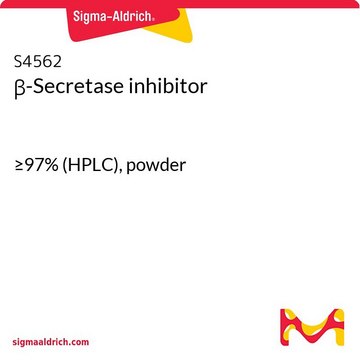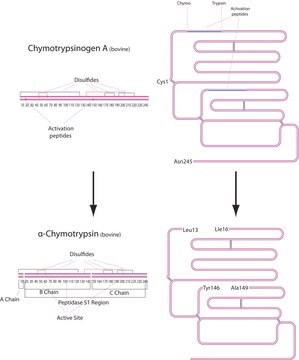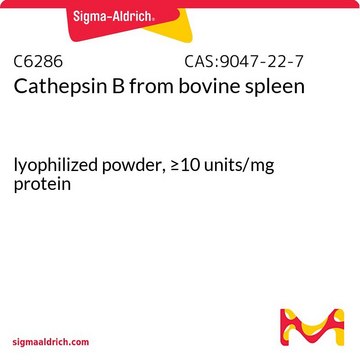C8118
Chymase human
recombinant, expressed in Pichia pastoris
Synonym(s):
Mast cell protease I
About This Item
Recommended Products
recombinant
expressed in Pichia pastoris
Quality Level
form
liquid
specific activity
≥40 units/mg protein
mol wt
~37 kDa by SDS-PAGE
concentration
125-400 μg/mL
UniProt accession no.
application(s)
diagnostic assay manufacturing
shipped in
dry ice
storage temp.
−20°C
Gene Information
human ... CMA1(1215)
Looking for similar products? Visit Product Comparison Guide
Related Categories
Application
Biochem/physiol Actions
Physical properties
Unit Definition
Physical form
Storage Class
10 - Combustible liquids
wgk_germany
WGK 1
flash_point_f
Not applicable
flash_point_c
Not applicable
ppe
Eyeshields, Gloves, multi-purpose combination respirator cartridge (US)
Certificates of Analysis (COA)
Search for Certificates of Analysis (COA) by entering the products Lot/Batch Number. Lot and Batch Numbers can be found on a product’s label following the words ‘Lot’ or ‘Batch’.
Already Own This Product?
Find documentation for the products that you have recently purchased in the Document Library.
Customers Also Viewed
Our team of scientists has experience in all areas of research including Life Science, Material Science, Chemical Synthesis, Chromatography, Analytical and many others.
Contact Technical Service








